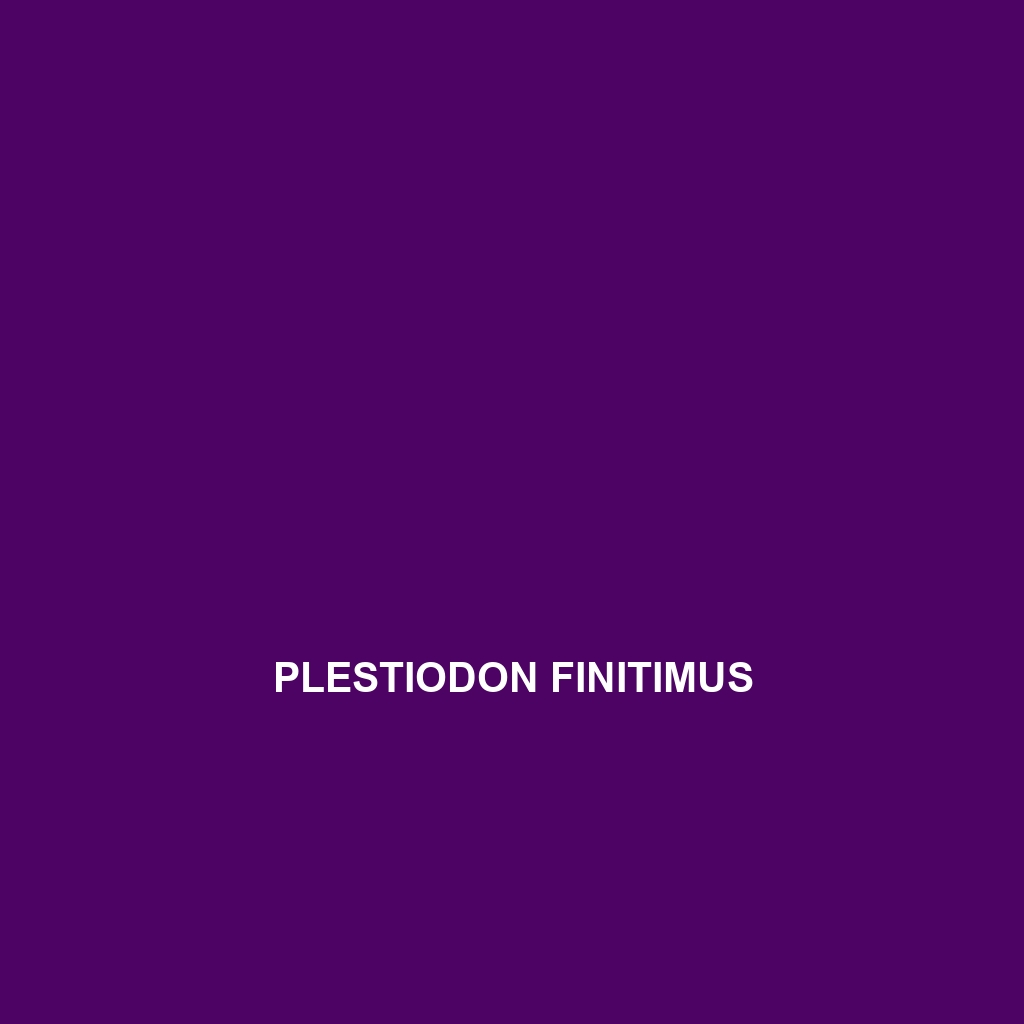Common Name
Plestiodon finitimus
Scientific Name
Plestiodon finitimus
Habitat
Plestiodon finitimus, commonly known as the prairie skink, is primarily found in the temperate forests and grasslands of central North America. This species thrives in a variety of habitats ranging from open woodlands to savannas, characterized by a mix of tree cover and open spaces. The typical climate in these regions includes warm summers and cool winters, which create favorable conditions for both basking and foraging activities.
Prairie skinks are also spotted in disturbed habitats like agricultural fields and urban areas, where they utilize leaf litter and debris for cover. The presence of sandy soils is a significant factor in their habitat preference, allowing for burrowing and sheltering from predators. As a result, their distribution can often be linked to geographic regions that offer both warmth and shelter, particularly where vegetation provides ample hiding places.
Physical Characteristics
The Plestiodon finitimus is a medium-sized lizard, typically exhibiting a slender build and a length that ranges between 12 to 20 centimeters (4.7 to 7.9 inches). One of the key distinguishing features of this species is its striking coloration—adults display a mix of olive or light brown bodies with distinct yellow or cream stripes running down their sides, often becoming more vibrant during the breeding season.
Juveniles are particularly distinctive, showcasing bright blue tails that serve as a deterrent to predators. In addition to coloration, the surface of their scales is smooth and shiny, giving the lizard a sleek appearance. Their anatomy includes well-developed limbs and a relatively elongated tail that can regenerate if lost, making them agile climbers and effective escape artists in their natural habitat.
Behavior
Plestiodon finitimus exhibits fascinating behaviors, particularly in terms of its daily activities. This species is primarily diurnal, meaning it is most active during daylight hours. During the early morning and late afternoon, these skinks engage in basking to regulate their body temperature, a crucial behavior for their survival.
Social interactions among prairie skinks are minimal, although they may be seen basking in groups during peak sun exposure. The mating rituals of Plestiodon finitimus occur in spring, where males display vibrant colors and perform visual displays to attract females, often engaging in head-bobbing and other displays of dominance. Their territorial behavior becomes prominent during this time, with males exhibiting aggressive interactions towards each other.
Diet
The dietary habits of Plestiodon finitimus categorize it as an insectivore, primarily foraging for a diet that consists largely of insects such as crickets, beetles, and worms. These lizards have developed keen foraging techniques, often hunting through leaf litter and grassy areas where they can find prey. Occasionally, they may consume small invertebrates, contributing to their role as predators within their ecosystem. Their feeding patterns are highly adaptive, allowing them to thrive in various environmental conditions where food resources may fluctuate seasonally.
Reproduction
The reproductive cycle of Plestiodon finitimus typically begins in spring, coinciding with warmer temperatures. Mating occurs from late spring to early summer, with females laying clutches of 3 to 12 eggs in sandy or loose soil. The gestation period lasts about two months, after which hatchlings emerge, typically in late summer to early fall.
Interestingly, the young skinks initially exhibit bright blue tails, which serve as a survival adaptation to prevent predation. Post-hatching, the mother provides little to no parental care, leaving the young to fend for themselves almost immediately. The juvenile skinks quickly learn to adapt to their environment and begin foraging within their first week of life.
Conservation Status
Currently, the Plestiodon finitimus is considered to be of “Least Concern” according to the IUCN Red List. However, threats such as habitat destruction, climate change, and human encroachment pose challenges to their populations. Conservation efforts focus on preserving their natural habitats and implementing measures to mitigate the impacts of urbanization. Awareness about their ecological role is crucial for ensuring their continued survival in the wild.
Interesting Facts
One fascinating aspect of Plestiodon finitimus is its ability to change color slightly with age and temperature, showcasing how lizards can adapt to their surroundings. Additionally, the regeneration of their tails is a remarkable defense mechanism that allows them to escape predation. Their vibrant juvenile coloration serves not only as camouflage but also as a visual cue to warn potential predators of their inedibility.
Role in Ecosystem
Plestiodon finitimus plays a vital ecological role within its habitat. As an insectivore, it helps control insect populations, thereby maintaining a balanced ecosystem. This species is also a food source for larger predators, including birds of prey and mammals. Their presence indicates a healthy environment, as they require specific habitat conditions to thrive, making them an important species for monitoring ecological health. Furthermore, their burrowing activity aids in soil aeration and nutrient cycling, contributing to the overall vitality of their ecosystem.
